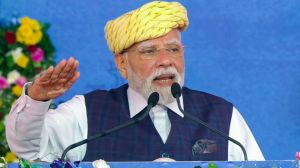UP bureaucracy top-heavy but officers still unsatisfied
LUCKNOW, SEPT 14: ``Overcrowding at the top has left many of us with no work to do and reduced our responsibility,'' claims a senior IAS o...

LUCKNOW, SEPT 14: “Overcrowding at the top has left many of us with no work to do and reduced our responsibility,” claims a senior IAS officer in Uttar Pradesh, echoing sentiments his fellow bureaucrats have harboured for the past several years.
True, the shape of the bureaucracy in UP is still a pyramid, but a hopelessly inverted one. Due to their proximity to the powers that be, IAS officers have got themselves promoted at will during the past decade and IPS officers simply followed suit. The result is not just gross mismanagement of the cadre but also a sense of disillusionment due to the dilution of their powers.
Indeed, the facts only back the officer’s claim about overcrowding. There are eight IAS officers in the state against the sanctioned strength of two in the top scale of Rs 8,000, ie, of chief secretary rank. Similarly, there are 33 principal secretaries against the sanctioned strength of just 11 and 80 secretaries against the sanctioned strength of 34.
The cadre started to become top-heavy in 1994 after IAS officers of three batches — 1969, 1970 and 1971 — were promoted from the rank of secretary to principal secretary at one go — apparently to facilitate the promotion of an officer known to enjoy the patronage of then chief minister Mulayam Singh Yadav.
To make matters worse, all 36 posts of joint secretaries in the state have been lying vacant for the past six years. In fact, IAS officers now bypass the post of joint secretary and are designated special secretaries immediately after being promoted from the post of deputy secretary.
This was the result of another decision taken by Mulayam Singh Yadav six years ago when he allowed the Provincial Civil Service officials to be promoted to the rank of special secretary. And this is what Aparmita Prasad Singh, president of the UP IAS officers’ Association, points to while defending the bypassing of the joint secretary post. “How can an IAS officer be subordinate to a state service officer,” he asks, even while admitting that the cadre suffers from mismanagement.
IPS officers are no better off. There are eight Directors General of Police in the state though there ought to be only three. What’s more, as many as 17 officers have been designated Additional DGs though not a single post has been sanctioned by the Centre. Similarly, there are 52 IGs in the state against the sanctioned strength of 15 and 64 deputy IGs against a cadre strength of 40.
In fact, the rate of promotions has zoomed way beyond the induction rate of IPS officers. Consequently, there are only 107 IPS officers posted as Superintendents of Police (SPs) though the sanctioned strength is 157. Of the total cadre of 395 IPS officers, 227 are working on senior duty posts.
In fact, the situation has come to such a pass that while posts of one ADG, four IGs and three deputy IGs have been sanctioned for the State Intelligence Department, there are only two sanctioned posts of the SP level.
Yet, IPS officers are unsatisfied. “Why don’t you look at the accounts services or postal services?” said Manoj Kumar Singh, secretary of the UP IPS Officers’ Association, pointing out that these services are even more top-heavy and have more promotion avenues open to them. “We are actually stagnating, getting much less than other services,” Singh adds.
Interestingly, association president M.C. Dwivedi is learnt to have told the Padmanabhaiya Committee on Police Reforms when it visited Lucknow a few months back that in their race for quick promotions, IPS officers got their posts upgraded, but this has only resulted in an erosion of their authority.
Police officers feel that the top post in their service has become a political appointment as every new Chief Minister posts his favourite as the DGP, who, in turn, is supposed to cater to interests of the former and his party.
Singh, however, suggests that political interference in the bureaucracy can be checked by strengthening the institution and not individuals. Measures like a fixed minimum tenure for a DGP, a proper cadre management plan which must outline the minimum period each officer would have to spend in various branches like CID, Intelligence and field (to stop the scramble for lucrative posts) and a timely pay revision, were likely to check the rot setting in the service, he says.
With the average tenure of SPs having been reduced to one or two months, their task has become very difficult. By the time they familiarise themselves with the terrain and personnel, they are shunted out, says Singh, reiterating the importance of a fixed term. “Mid-term transfers should be the exception so that it becomes a stigma, like suspension,” he adds.
Photos



- 01
- 02
- 03
- 04
- 05




























